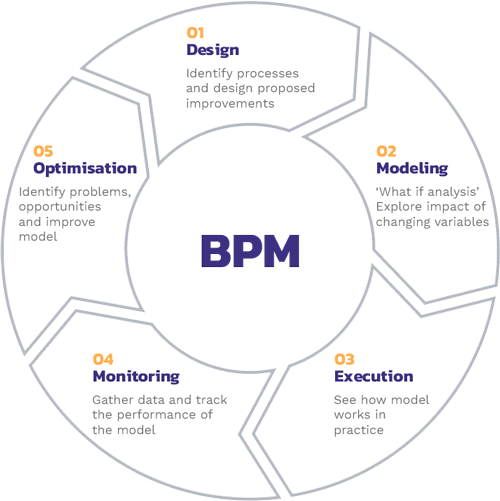Digital Transformation Pt. 3 - Business Processes
This is the third part of our series on digital transformation. If you're looking for a specific article in the series, here are the links to each post:
- Part 1 - Introduction
- Part 2 - Company Culture
- Part 3 - Business Processes
- Part 4 - Information Technology
In part two of our series we saw that the foundation of digital transformation is a strong digital culture within the team. But how should we change our processes to aid this cultural shift?
Business Process Management
To enable digital transformation your company requires a clear strategy to identify gaps in the processes and find solutions on how to make them more efficient. This process is called business process management, or BPM for short.
The aim of BPM is to identify and optimise the repetitive, predictable processes needed for a business to function. In many ways BPM relates to philosophies like Kaizen, methods like Lean and tools like Six Sigma.

BPM used to be a one-off event in many companies, but digital leaders have made it a constant process. If your company has the culture part nailed down, it's going to be really easy for your team to get fully invested in BPM.
Be Nimble, Be Agile
Another term often associated with digital transformation is agile. Agile is a set of values and principles described in the Agile manifesto. Agile is closely related to the IT industry, where it is widely used. It's benefits are clear and proven, so there is no reason not to implement it across other business areas.
The main benefit of agile is it's flexibility. Conventionally, new business ventures are documented upfront in great detail and little room for change. Agile on the other hand embraces change.
The agile process is defined that if business priorities change or the team discovers a solution that is more efficient or adds more business value, then they have the flexibility to switch focus.
While BPM allows your team to stay alert and look out for opportunities for improvement, agile helps in putting these improvements into action quicker. Gradually introducing these tools one team at a time will allow companies to support digital transformation.
